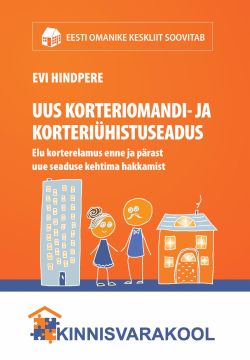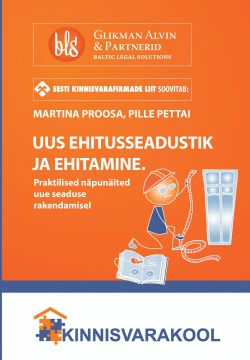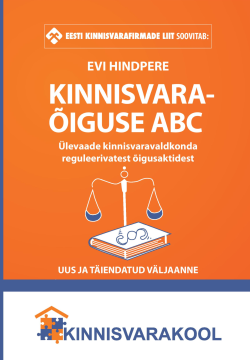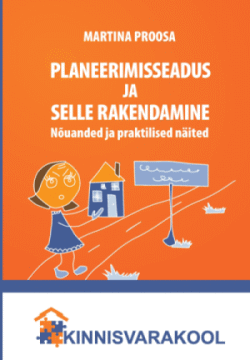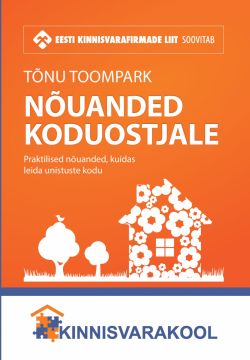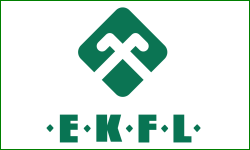Whilst the focus of this blog is on Tallinn, we sometimes like to focus on the rest of Estonia, both in terms of residential real estate and in other sectors, or related areas. This article is a translation of an item about the market for forest land in Estonia which first appeared on Tõnu Toompark’s adaur blog.
When considering the market for forest land in Estonia, it soon becomes apparent that the greater part of buyers are domestic investors who undoubtedly view their investments in the short term, but are nonetheless willing to pay more for forest land, since the price of timber has risen when compared with other forms of real estate.
The most pressing question in the forest land market currently is without doubt, is investor interest still increasing?
Uusmaa property consultant Vivika Simmo has answered this question unambiguously: the interest is there again. Investors are once more considereing the prospective growth in forest land.
She points out that the increasing use of timber contributes to the quick sale of forest land by the state’s reserve to those who ae interested. “The greater part of this is from owners who have the advantage of borderland forest land” she said.
Another interesting question is whether there are regional variations. Simmo thinks not, and that this interest is widespread throughout the country. “It is well known that forests in Läänemaa (a county in Northwest Estonia) are of a lower quality, but ultimately everything is price-dependent” she said. “If the forest for sale is offered at a reasonable price, then the interest will follow in every case” she went on.
However, when approached from an investor perspective, then what will the the investor see that will above all make forest land appear attractive? Ms. Simmo identifies three key attributes: good land, strong prospects and the opportunity for expanding the area.
According to the consultant, this is not related to larger investors, but small scale forest owners have seen the forest land sales surge during summer and autumn, when children return to school or free money will be used for other outgoings, but she doesn’t recommend taking out a loan.
Pindi Kinnisvara managing director Peep Sooman was unable to say precisely what the current market trend in forest land was. He did however acknowledge that the market is somewhat in turmoil and that clear indicators of either rising or falling trends were largely absent.
However Mr. Sooman pointed out one important aspect, that buyers will continue to be found amongst both those companies whose goal is within a short space of time to produce the maximum amount of timber and from institutional investors with an interest in larger forest properties and investment horizons stretching to decades; these two differing approaches have been divided betweem elites. Due to the differences in perspectives, investors have very different demands on land in the region and thus the composition of the forest.
Real estate Arco Vara broker Margus Põld pointed out that forest is, next to the food sector, one of the largest in Estonian industry.
There are more than a thousand businesses involved in timber and timber processing in Estonia, employing about 16 000 people.
Mr. Põld has pointed out three trends arising from this which affect the timber industry and consequently the forest land market. First, growth in the European timber market has been directly affected by the global financial crisis. The second phenomenon is that of growing demand for timber from China and Japan, and the third is a growth in demand for wood chippings, which should take place in 2012.
He illustrated this third point by stating that the energy consumption yielded by two million cubic metres of wood chips would require 800 000 cubic metres of timber to produce.
In the light of these factors we can capture the essence of the most important question, according to Mr. Põld, namely, what is investor interest in Estonian forest land and what specifically are they seeking?
It is clear that foresting rights for existing stock are purchased by the domestic market, since overseas investors have virtually no logging rights in Estonia.
Mr Põld emphasised that investor interest is in the long-term perspective and the desire is for forest together with any land purchased. It should be noted, Mr Põld goes on, that larger investor interest starts with land at an area of 600 hectares or more.
Another important fact, according to Mr Põld, is that with forest land purchase investors are primarily interested in fresh inventory, in other words the existence of a forest management plan.
Põld admitted that a local investor buying forest land will do so with a 10 year felling perspective. “Foreign investors tend to invest for the long term and are looking more for fertile forest land with good growth potential”. He pointed out. This brings an interesting situation, where for example a smaller area of land used for forest can provide better value to a local investor than to an overseas one.
It is clear that Estonia is small and that we are affected primarily by world trends, and as a result it could be said that price volatility over the past couple of years has been low.
Mr Põld concluded by pointing out that in comparison with other sectors of real estate, the price of forest land has been rising, which is an important fact for investors.
The original article (in Estonian) can be viewed here.






